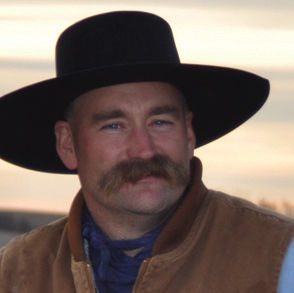Why is it that sustainable agriculture needs a definition? Through the years it has been described in so many ways, but really it is nothing more than producing more output with less input, improving and not depleting, and profitably maintaining production.
What else really matters? In the past 10 plus years the food marketing business has been trying to market its version of the concept and nothing drives me more insane than a food retailer spouting, “We are working with our suppliers to become more sustainable.”
Well, I have news for you. My family in Adams County, Illinois, is still farming the same land that the first Loos farmers did in 1832 so I wonder when we will become “sustainable.”
Like most farm and ranch families, the real challenges we face are the hurdles placed in front of us by the government to meet their sustainability expectations and they have very little to do with actual farming and ranching practices. Let me quickly give you an example. In Nebraska, we pay nearly $20 an acre annually in property tax. And in paying that annual fee, in just over 20 years that amount equates to more than half of what we paid per acre to buy the land. I figure that in my county it takes roughly 7 acres per cow/calf pair to grow my calf so that means the first $140 of my calf sale goes to pay the taxes on land that I own.
For those that own property, you follow all of that, but for those who don’t I want to point out that those figures are just the property tax bill. I also need to pay for the animal itself, I need to pay for feed, I need to pay for its health and well-being including mineral, salt, medications and veterinary care. Sustainability has more to do with all inputs than using an input or feeding my cows corn.
The importance of walking through all of that is to create a visual about everything involved in sustainability. The greatest hurdle I need to mitigate is the toughest one of all and that is Mother Nature. One hailstorm, one blizzard or one severe drought and all you can do is hope for better luck next year.
The role of the farmer and rancher is quite simply to put in place the management strategies to combat all of the above. If you look at U.S. Department of Agriculture data back in 1900 before any petro chemical inputs into food production, it took roughly 10 acres of land to produce enough food to feed one person each year. As a side note, it took half of that to feed each person and the other half to feed the horses and mules needed to supply the energy to do the farm work.
I truly believe the great challenge today we have is that we have allowed other individuals, instead of the folks who get their hands dirty growing food, to define sustainability. If for no other reason, the management needs are different in Montana than they are in Florida. In fact, management needs vary within each state, and county by county. Take Kansas, for example. The eastern third gets twice the annual rainfall of the western third, which makes resources and inputs vary greatly. Each one of us needs to determine what is the best sustainable practice for our operation going forward and not someone with a big pen in a small cubicle.
Here is the other part of the equation that frequently gets left out. If you are not achieving a market value for what you produce that is higher than the cost of production, you are not sustainable. We have witnessed massive global consolidation in the marketplace of virtually every single farm commodity so quite honestly you could be the most efficient producer on the planet and yet if you don’t market properly, you are toast. For most of my career, we have bragged about spending less than 10% of U.S. disposable income on food and it is now the farmers who are suffering the brunt of that accomplishment, not the food system as a whole.
At the end of the day when marketing folks try to paint “sustainable agriculture” with a broad brush, they truly don’t understand what it even means. I believe there is one most important factor we need to address as we go forward in a time of challenged supply chain issues. The food producer and the consumer need to develop that relationship again like my grandfather had with his customers in the early 70s. Twice a week, Calvin Loos would go into Quincy peddling eggs directly to homes and bring home the products we needed that we didn’t raise. That was sustainable then and always will be if you are willing to peddle.
While it may look different in 2022 than it did in 1972, the concept is still the same: Raise a good product, earn the trust of the consumers and sell your goods to those who desire to pay a fair price for them.
Editor’s note: The views expressed here are the author’s own and do not represent the views of High Plains Journal. Trent Loos is a sixth generation United States farmer, host of the daily radio show, Loos Tales, and founder of Faces of Agriculture, a non-profit organization putting the human element back into the production of food. Get more information at www.LoosTales.com, or email Trent at [email protected].
